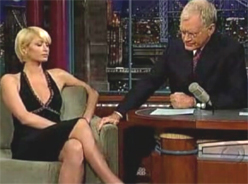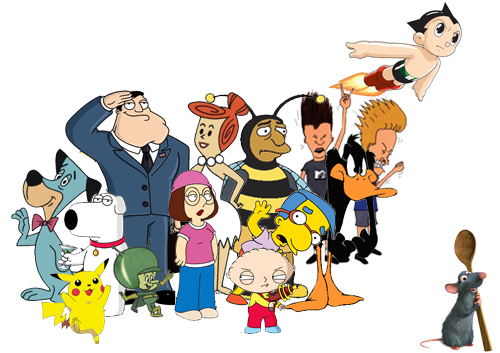
All hail, loyal readers of this esteemed column.1 Having been awakened from our long-ish slumber to blink our eyes anew at a world that is moving ever-faster and ever-crasser toward TMZ apocalypse, we have done what any pair of reasonable adults would do: we have started watching cartoons again.
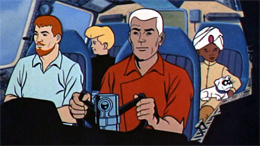 Like all American youth, we were once cartoon fans of the first order, rising early on weekends to swim freely in the glorious ocean that was pre-cable Saturday-morning TV. We were as steeped in Bugs and the Road Runner as a Bryn Mawr sophomore is enveloped in Sylvia Plath. Though we slummed in the work of Messrs. Hanna and Barbera like the rest of our generation, we recognize now the cheap chuckles that were Huckleberry Hound and the faux-adventure of Jonny Quest without actually eschewing their essential pleasures. We tell you this simply to assure you that, at our roots, we are neither dilettantes nor elitists when it comes to the world of animation. Still, today’s menu of available animated entertainment2 generates in us one essential emotion: fluttering disquietude.
Like all American youth, we were once cartoon fans of the first order, rising early on weekends to swim freely in the glorious ocean that was pre-cable Saturday-morning TV. We were as steeped in Bugs and the Road Runner as a Bryn Mawr sophomore is enveloped in Sylvia Plath. Though we slummed in the work of Messrs. Hanna and Barbera like the rest of our generation, we recognize now the cheap chuckles that were Huckleberry Hound and the faux-adventure of Jonny Quest without actually eschewing their essential pleasures. We tell you this simply to assure you that, at our roots, we are neither dilettantes nor elitists when it comes to the world of animation. Still, today’s menu of available animated entertainment2 generates in us one essential emotion: fluttering disquietude.
The Creepy Endlessness and Ultimate Enshrinement of The Simpsons, Fine and Brilliant as It Plainly Is
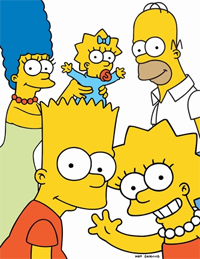 We don’t mean to get into a set-to with fans of The Simpsons, and so we hereby concede that it is one of the greatest TV shows ever and a boon to American comedy as a whole, a timeless classic, the very essence of all that is good about popular culture, and so on.3 We put it in the same category with such classics as The Honeymooners, I Love Lucy and All in the Family. No lack of respect here.
We don’t mean to get into a set-to with fans of The Simpsons, and so we hereby concede that it is one of the greatest TV shows ever and a boon to American comedy as a whole, a timeless classic, the very essence of all that is good about popular culture, and so on.3 We put it in the same category with such classics as The Honeymooners, I Love Lucy and All in the Family. No lack of respect here.
But what Jackie Gleason, Lucille Ball and Carroll O’Connor had going for them was being human—the frailty of their flesh-and-blood actual-ness. The Simpsons is ink on the page, a team of Asian animators as eternally youthful as our rotating cast of Eastern European masseuses, and a bunch of smart-alecky Harvard Lampoon veterans who know how to spell the word “D’oh!” As a result, characters never need to age and voice actors have a limited ability to monkey-wrench the show by demanding too much money or leaving to star in some crappy spin-off where they live in another city and get a prettier girlfriend. The Simpsons is like a robot from some weak sci-fi movie based on a P. K. Dick short story4—it never needs to die but it’s got existential issues.
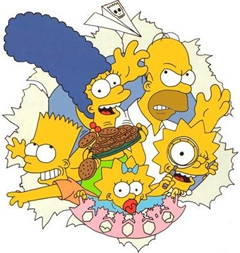 So the problem with the Springfield gang is not that they stink but, rather, that they’re gaining force, Schwarzenegger-style, even as the shtick-pendulum swings back toward the merely funny. This past summer it was The Simpsons Movie (and serious cash, suggesting that another can’t be far behind), and each new episode for the last few years seems to contain more guest voices than it does bits of cohesive satire. That it is still better than the animated competition is (as we shall discuss) faint praise indeed.
So the problem with the Springfield gang is not that they stink but, rather, that they’re gaining force, Schwarzenegger-style, even as the shtick-pendulum swings back toward the merely funny. This past summer it was The Simpsons Movie (and serious cash, suggesting that another can’t be far behind), and each new episode for the last few years seems to contain more guest voices than it does bits of cohesive satire. That it is still better than the animated competition is (as we shall discuss) faint praise indeed.
The problem, we think, is that after 400 episodes, even the richly varied cast of The Simpsons is pretty worn out. There are only so many shows you can base around Comic Book Guy, and there are only so many episodes that can feature Homer becoming, say, a music star (opera star, check; country songwriter, check; guitar player on stage with Elvis Costello, check; grunge innovator, checkarooo …). Watching new episodes these days is too much like masturbation: you know how it starts, you know where it’s going and—great as it is—a half-hour of this kind of familiarity is a serious chafing risk. When the movie came out this summer, it seemed to us that a relationship based on “quickies” perhaps wasn’t suited to a night out on the town.
 M. Groening, billionaire with poor art skills. |
The bottom line is simply this: enough already.
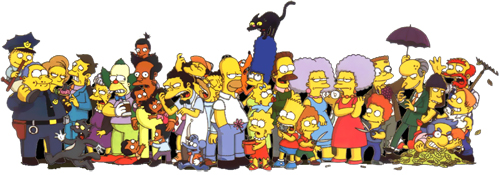
The Preponderance of Psuedo-Simpsonian, Semi-Subversive Cartoons, Not Half as Clever as They Pretend to Be, by a Certain Ubiquitous Animator Whose Stuff Actually Stinks and Is Tiredly Predictable.
As fine as The Simpsons is, all that has come in its wake is largely sad, derivative dreck. Yes, we’re talking to you, Seth MacFarlane. Pfft-tooey.
 S. MacFarlane, the world’s most successful plagiarist. |
First, Family Guy and now American Dad are blatant ripoffs that combine the most obvious elements of The Simpsons with the least desirable portions of older cartoons. This seems almost too obvious to discuss here, and we instead refer you to two episodes of The Simpsons itself in which F.G. main character and blue-collar dad Peter Griffin is depicted as a clone of Homer Simpson (the 2004 Halloween special) and in which Peter Griffin is found in an Italian book of criminals labeled “Plagiarismo” and American Dad’s Stan is labeled “Plagiarismo di plagiarismo” (“The Italian Bob” from December 2005).
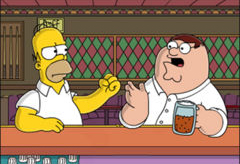 Worse is the fact that that, with American Dad, MacFarlane has simply ripped off himself, producing a second animated clone for the exact same network that looks, sounds, and riffs in every way like its Xeroxed predecessor. “Plagiarism di plagiarism,” indeed.
Worse is the fact that that, with American Dad, MacFarlane has simply ripped off himself, producing a second animated clone for the exact same network that looks, sounds, and riffs in every way like its Xeroxed predecessor. “Plagiarism di plagiarism,” indeed.
And worse than THAT, is the fact that both of MacFarlane’s laughless mutations are also bland rip-offs of other, lesser cartoons, starting with the greatest cartoon rip-off of them all, Hanna-Barbera’s The Flintstones.6 Everyone knows that The Flintstones was little more than an animated stone-age version of The Honeymooners. But Ralph Kramden did not have a little space-alien friend like the Great Gazoo. Stan in American Dad, however, has his own space alien in Roger. Roger sounds like Paul Lynde and also seems like a ripoff of … Alf? The evil infant son Stewie on Family Guy has a football-shaped head, nearly identical in look to the title character from Nickelodeon’s Hey, Arnold!.
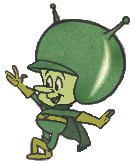 Should we keep going? In general, MacFarlane’s two shows cop the “satire of the U.S. family” vibe of Groening’s show—a blowhard dad with an inexplicably affectionate and even sexy mom. Mainly, though, it’s the attitude of subversion that has been pilfered. Every thieved detail is cheap but non-fatal, but the stolen conception was always doomed. The Simpsons holds a mocking mirror up to the American family and the American town—even the whole culture—and finds it horribly, hilariously wanting. Groening’s show is smarter than just about anything else and disrupts with a satirical bull’s-eye in mind, and people are laughing at the insights as much as the donut jokes. MacFarlane’s shows appropriate the same look and the same titillating tone but miss the whole larger point. It’s as if The Simpsons is Portnoy’s Complaint, where Portnoy wanks into a piece of liver from the fridge and MacFarlane’s stuff are the American Pie movies where the kid enjoys an apple-pie vagina. Both are crude, and only one is art.
Should we keep going? In general, MacFarlane’s two shows cop the “satire of the U.S. family” vibe of Groening’s show—a blowhard dad with an inexplicably affectionate and even sexy mom. Mainly, though, it’s the attitude of subversion that has been pilfered. Every thieved detail is cheap but non-fatal, but the stolen conception was always doomed. The Simpsons holds a mocking mirror up to the American family and the American town—even the whole culture—and finds it horribly, hilariously wanting. Groening’s show is smarter than just about anything else and disrupts with a satirical bull’s-eye in mind, and people are laughing at the insights as much as the donut jokes. MacFarlane’s shows appropriate the same look and the same titillating tone but miss the whole larger point. It’s as if The Simpsons is Portnoy’s Complaint, where Portnoy wanks into a piece of liver from the fridge and MacFarlane’s stuff are the American Pie movies where the kid enjoys an apple-pie vagina. Both are crude, and only one is art.
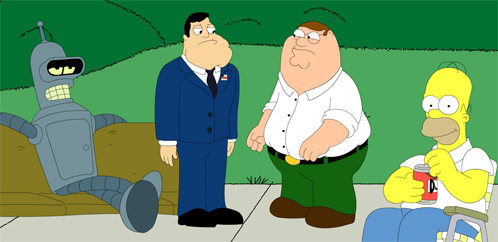
The Baffling Popularity of Japanese Anime
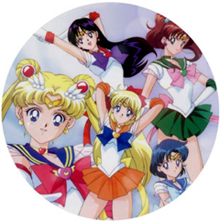 Part of what is so chillingly disquieting about animation today is the hypnotic (and surely ballsack-related) grip that Japanese “anime” seems to have on the imagination of a certain realm of U.S. kid.7Everything from Sailor Moon (creepy fashion-conscious adventure for eight-year-old girls) to certain geisha-tastic entries we’ve seen on Cartoon Network’s “Adult Swim”8 looks pretty much the same: giant eyeballs and weirdly round faces that make every character look like a pedophiles sheet-staining dream.
Part of what is so chillingly disquieting about animation today is the hypnotic (and surely ballsack-related) grip that Japanese “anime” seems to have on the imagination of a certain realm of U.S. kid.7Everything from Sailor Moon (creepy fashion-conscious adventure for eight-year-old girls) to certain geisha-tastic entries we’ve seen on Cartoon Network’s “Adult Swim”8 looks pretty much the same: giant eyeballs and weirdly round faces that make every character look like a pedophiles sheet-staining dream.
What disquiets about anime, though, is less the sliding-scale eroticism than the cradle-to-adulthood marketing scheme that is in place. Cartoons, GameBoy, Manga comics, board games, porn. Once cartoons were all about Bugs Bunny and Daffy Duck, quintessentially American figures.9 Today—Dragon Ball Z? Ask the good folks at General Motors how they feel about Toyota and maybe you’ll start to get the picture.
The Failure of Beavis and Butt-head to Revolutionize U.S. Comedy and Live On Properly
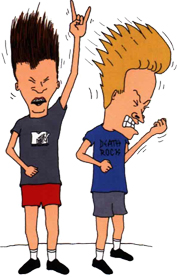 There are things other than The Simpsons that have gone right in U.S. animation in the last 20 years, no doubt. We started as minor South Park skeptics but have since come around, deeply impressed with what Trey Parker and Matt Stone have ultimately done with a bunch of paper cutouts and some foulmouthed kids. That they made a musical out of it all for the big screen is the kind of unlikely success story that is almost D.M.T.-like in its glory.
There are things other than The Simpsons that have gone right in U.S. animation in the last 20 years, no doubt. We started as minor South Park skeptics but have since come around, deeply impressed with what Trey Parker and Matt Stone have ultimately done with a bunch of paper cutouts and some foulmouthed kids. That they made a musical out of it all for the big screen is the kind of unlikely success story that is almost D.M.T.-like in its glory.
Even better, we felt, was the sublime Beavis and Butt-head, Mike Judge’s breakthrough MTV series that nailed adolescent boys with such vicious accuracy and Waiting for Godot-esque simplicity that it struck us as genius. Not much happened on B.&B.; two idiots just watched music videos on a station that was known for mostly broadcasting idiotic music videos so that they could be watched by the very idiots who were watching the idiots watch … you get the idea. If Jorge Luis Borges were an animator, he’d have made B.&B.
Then, quick as it came, the show vanished. Judge went on to make some oddball movies10 and then—again on Fox—the laconic King of the Hill. And, alas, charming as Hank Hill’s Sunbelt Absurdism can be, the basic set-up of KotH is clone-ishly MacFarlane-ish and thus is just a subset of the disquieting problem outline supra. That B.&B. wound up a mere dead end is more sad than upsetting, but our love for “The Great Cornholio” elevates this topic above a footnote, friends, and if you disagree you will have to head off to Lake Titicaca and go without T.P. for your bunghole.
Clay Animation and Its Unfortunate Effect on Our Minds When We Consider What Is Behind It
 We are properly and respectfully amazed at the stop-action wizardry of Nick Park and the Wallace and Gromit gang, which of course is faithfully detailed on any DVD of theirs. When you consider the Egyptian-slaves-building-pyramids level of fussy exactitude the process apparently involves and the group’s pretty voluminous output, it gives you a Southern Comfort and Coke headache that might last all day.
We are properly and respectfully amazed at the stop-action wizardry of Nick Park and the Wallace and Gromit gang, which of course is faithfully detailed on any DVD of theirs. When you consider the Egyptian-slaves-building-pyramids level of fussy exactitude the process apparently involves and the group’s pretty voluminous output, it gives you a Southern Comfort and Coke headache that might last all day.
What we do NOT understand is how their excruciatingly Luddite art differs in the least from that which produces Bob the Builder, who, as parents of young children, we note, refreshingly, never blows its own shofar re: aforementioned Egyptian-slave-level dedication & etc., but rather takes its humble place between Maya & Miguel and Zula Patrol on PBS and just fucking mans a post in the battle to make our kids marginally smarter despite the hours of TV they consume. We are sure that we are Philistines in making this observation. But still.11
Disney/Pixar v. DreamWorks
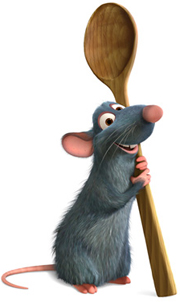 There was a time not all that long ago when Disney—having come out of the animated movie retirement that left us with Snow White, Cinderella, Bambi, and on up through The Jungle Book—just made one good animated movie each year. Now, however, there is a continual and seemingly endless and wearyingly tired annual showdown between Disney/Pixar and DreamWorks over which studio can create the most hyperreal-looking and über-stylized animated extravaganza and, ultimately, which jacked-up digital-animation circle jerk can capture the most of what, in the age of TiVo and game-ready cellphones, must be a dwindling market share of parents’ programming of their children’s Saturdays according to Happy Meal toys.
There was a time not all that long ago when Disney—having come out of the animated movie retirement that left us with Snow White, Cinderella, Bambi, and on up through The Jungle Book—just made one good animated movie each year. Now, however, there is a continual and seemingly endless and wearyingly tired annual showdown between Disney/Pixar and DreamWorks over which studio can create the most hyperreal-looking and über-stylized animated extravaganza and, ultimately, which jacked-up digital-animation circle jerk can capture the most of what, in the age of TiVo and game-ready cellphones, must be a dwindling market share of parents’ programming of their children’s Saturdays according to Happy Meal toys.
This past summer, it became clear that these films are no longer actually being made for children as they are, uh, no longer technically “humorous,” a word vaguely synonymous with “funny,” which is say that Ratatouille had no fart jokes in it no matter how much The New York Times loved it. We actually brought kids to see this thing, and they gave it a collective “What the … ?”12
O.K., kids. Now, get back to your Saturday morning cartoons. Or are you just playing Halo 3 these days?
Next Installment: D.M.T. Does the Super Bowl, Again!

